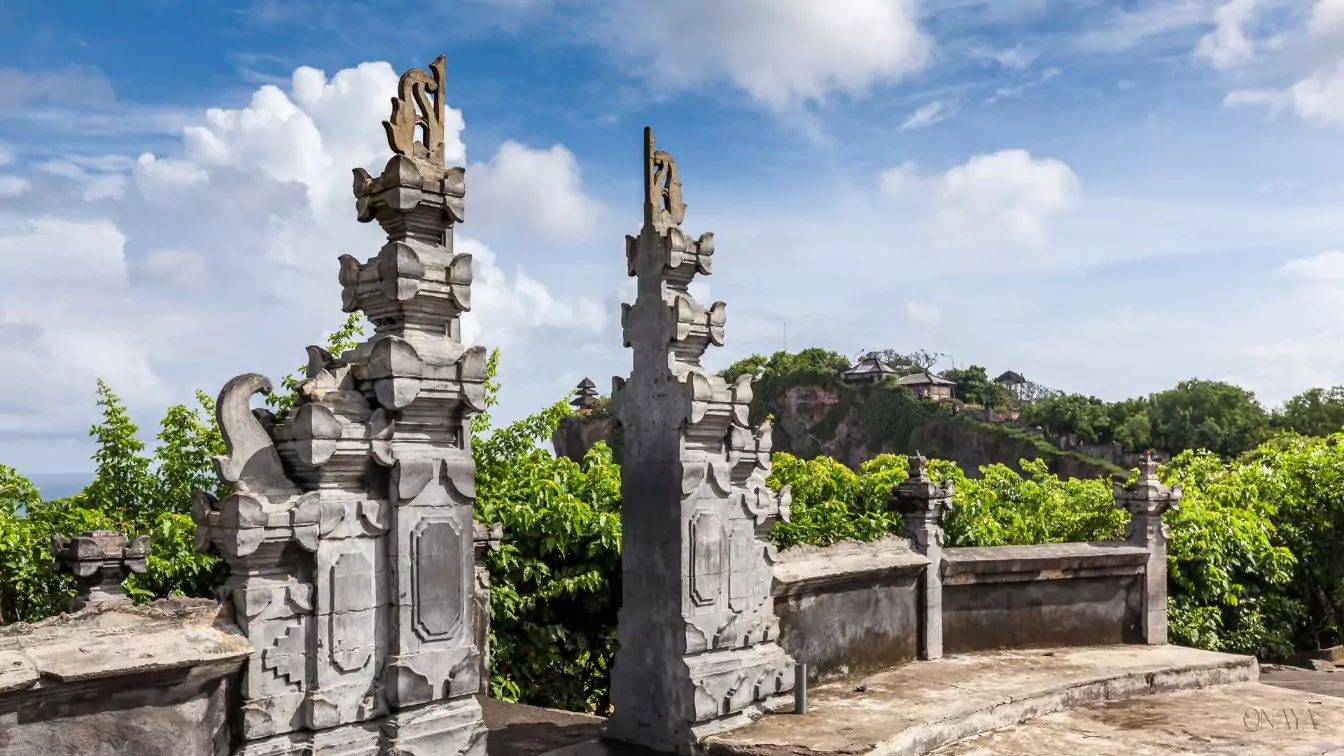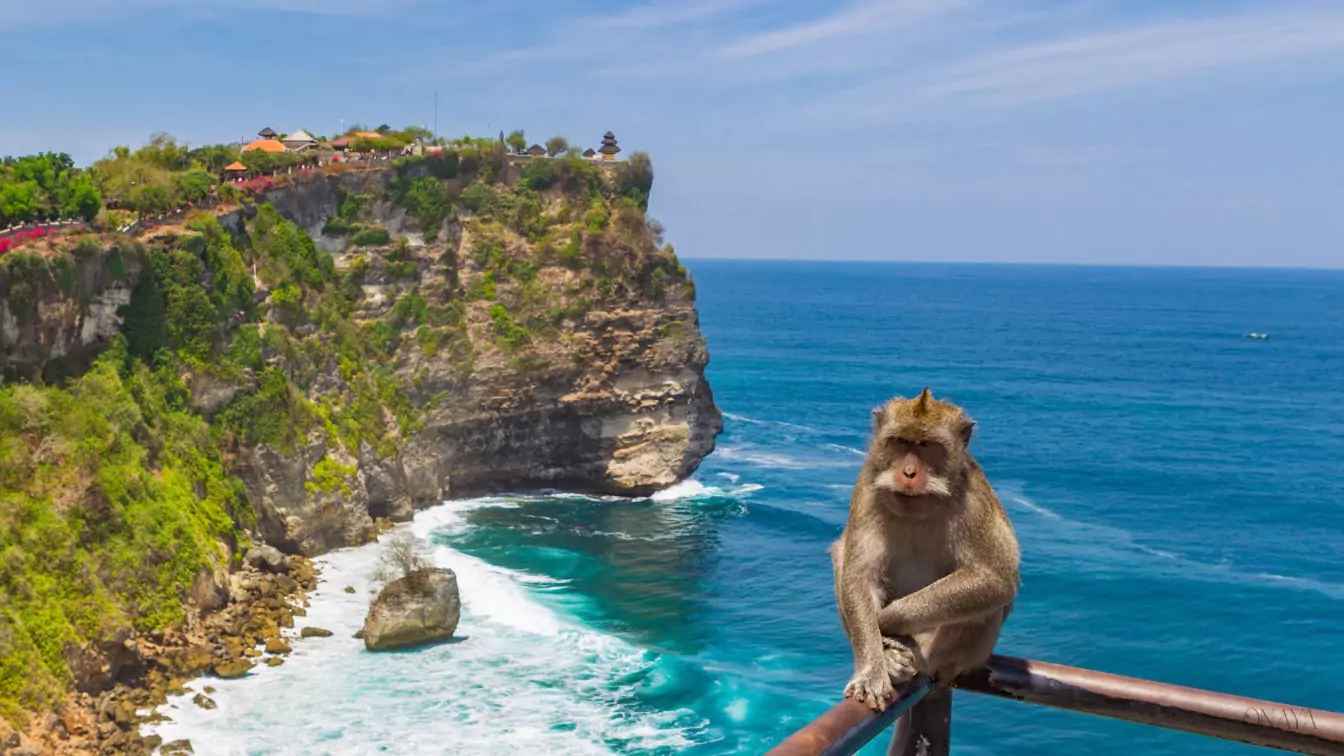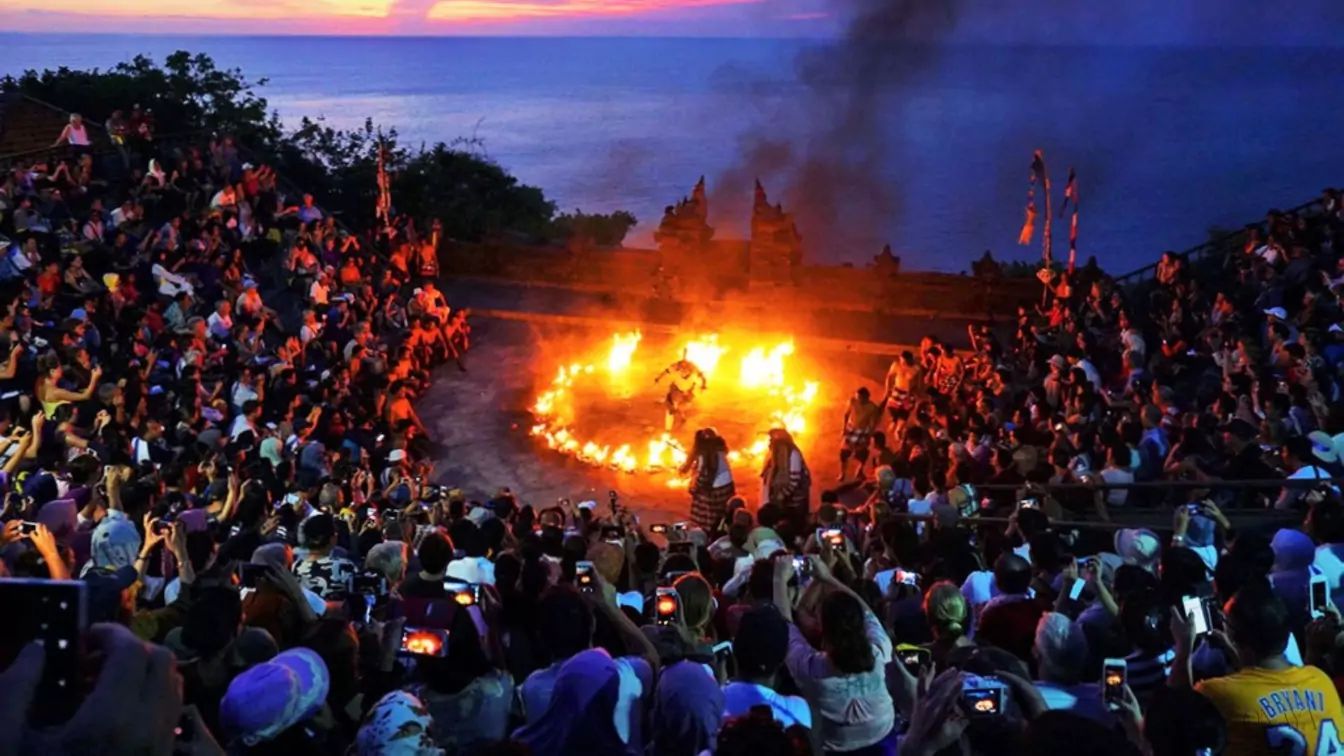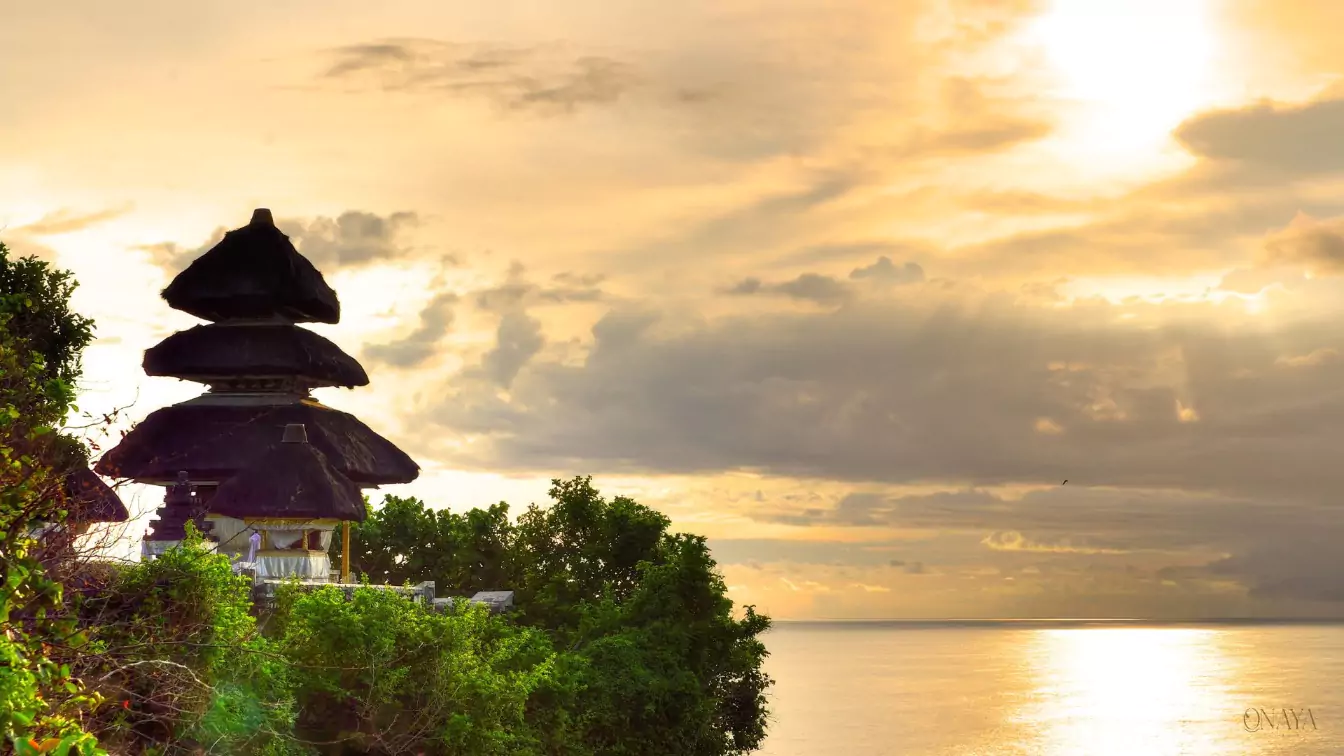Uluwatu Temple Bali is a breathtaking sight. It sits on a 70-meter cliff overlooking the Indian Ocean. This ancient Hindu sea temple dates back to the 11th century. It perfectly blends spiritual meaning, amazing architecture, and natural beauty. As you approach, you’ll see how it fits right into the cliff, as if it grew there.
Uluwatu Temple isn’t just pretty to look at. It’s a gateway to understanding Bali’s rich culture and deep spiritual roots. Whether you love history, nature, or just want some peace, this cliffside wonder has something for you. Let’s explore the hidden treasures and fascinating stories of this remarkable place.
Historical Background

A. Founding in the 11th century
Uluwatu Temple Bali’s story began over a thousand years ago. It was a time when Bali was changing a lot. Hinduism was growing on the island. The temple’s founding was a big moment in Bali’s history. It showed how the island’s spiritual identity was growing.
Imagine how hard it must have been to build such an impressive temple here. The ancient Balinese builders had to work on steep cliffs and fight strong sea winds. Their success shows how skilled and determined they were.
B. Role of Javanese sage Empu Kuturan
Empu Kuturan, a Javanese sage, played a big part in founding Uluwatu Temple. He helped shape Bali’s religious landscape in the 11th century. Empu Kuturan introduced the idea of Tri Murti in Balinese Hinduism. This recognizes the three main Hindu gods: Brahma, Vishnu, and Shiva.
Legend says Empu Kuturan meditated where Uluwatu Temple now stands. He felt its spiritual power and connection to the divine. He saw the temple as more than a place to worship. Instead, he saw it as a spiritual fortress protecting Bali from evil sea spirits.

Location and Physical Characteristics

A. Geographical location in Bali
Uluwatu Temple sits on the southwestern tip of Bali, in the Bukit Peninsula. It’s about 25 kilometers south of Kuta, a popular tourist spot. Its location offers great views of the ocean and coastline.
The journey to Uluwatu is fun. As you travel south from busy Kuta or Seminyak, you’ll see the landscape change. The crowded areas give way to open spaces. You’ll catch glimpses of the ocean through lush greenery.
B. Elevation and size of the temple complex
Uluwatu Temple sits 70 meters (230 feet) above sea level. This height gives amazing views of the ocean and coastline. It also adds to the temple’s spiritual meaning.
The temple complex covers about 7 hectares (17 acres). This big space has many structures and areas, each with its own purpose. As you explore, you’ll move through different levels, each offering a new view of the temple and its surroundings.
C. Architectural style and features
Uluwatu Temple shows off traditional Balinese architecture. It uses local materials, detailed stone carvings, and unique multi-tiered roofs called “meru.”
One key feature is its series of split gates or “candi bentar.” These gates are common in Balinese temples. They symbolize the divide between the material world and the spiritual realm. The gates have intricate carvings that tell stories from Hindu mythology and Balinese folklore.
Religious and Cultural Significance
A. Status as one of Bali’s six key directional temples
Uluwatu Temple is one of Bali’s six key directional temples, known as Sad Kahyangan Jagad. These temples are thought to protect and balance Bali spiritually. Each temple guards against evil spirits from a different direction.
Uluwatu’s position in the southwest makes it the guardian against threats from that direction. It’s part of a spiritual shield around Bali, playing a crucial role in this divine protection network.
B. Importance for Balinese Hindus
For Balinese Hindus, Uluwatu Temple is a living part of their spiritual practice. It’s used for important ceremonies and rituals. These often relate to protection from evil influences and honoring the sea’s power.
One big event at Uluwatu is the Odalan temple anniversary. It happens every 210 days on the Balinese calendar. During this time, the temple is full of color, music, and offerings. Pilgrims from all over Bali come to take part in the ceremonies.
Natural Beauty and Wildlife
A. Panoramic ocean views
Uluwatu Temple offers stunning views of the Indian Ocean. From the top of the 70-meter cliff, you can see endless blue waters stretching to the horizon.
The view changes throughout the day. In the morning, the rising sun paints the sky in soft colors. By midday, the ocean sparkles under the bright sun. But the evening view is the most breathtaking.
B. Famous sunset vantage point
Uluwatu Temple is one of the best places in Bali to watch the sunset. As the day ends, you get a clear view of the sun sinking into the ocean. The sky turns into a canvas of bright oranges, pinks, and purples.
This daily show draws many visitors. The mix of the temple’s spiritual feel, the sound of waves below, and the amazing sunset creates a magical experience.
C. Resident monkey population
Uluwatu Temple is home to many grey long-tailed macaques. These monkeys are sacred in Balinese Hindu tradition. About 600-700 monkeys live in the area. You’re likely to see these playful creatures during your visit.
The monkeys add fun to the visit, but remember they’re wild animals. Treat them with respect and caution.
Visitor Experience
A. Best times to visit
Uluwatu Temple Bali is open daily from 7 AM to 7 PM. The best time to visit depends on what you want to see:
- Early Morning (7 AM – 9 AM): Good for avoiding crowds and enjoying peace.
- Midday (10 AM – 3 PM): Best for clear views of the ocean and landscape.
- Late Afternoon to Sunset (4 PM – 7 PM): Most popular time for the spectacular sunset views.
B. Entrance fees and dress code
As of 2024, the entrance fee for Uluwatu Temple Bali is IDR 50,000 for adults and IDR 25,000 for children. You must wear clothes that cover your shoulders and knees. You can rent a sarong and sash at the entrance if needed.
C. Popular attractions

Besides the temple itself, don’t miss:
- Kecak Fire Dance: A traditional dance performance at sunset (Book your seat to the Kecak Dance here and avoid the long lines).
- Cliff-side Walks: Paths along the cliff edge with stunning views.
- Monkey Forest: Where you can see the resident monkeys.
- Sunset Point: Special spots for watching the sunset.
Conservation and Preservation
Uluwatu Temple needs constant care due to its exposed location. Recent restoration efforts have reinforced the temple’s foundations and restored damaged structures. Ongoing maintenance includes regular cleaning, monitoring cliff edges, and preserving intricate carvings.
Practical Tips for Visitors
When visiting Uluwatu Temple, remember it’s a sacred site. Dress appropriately, remove your shoes before entering temple buildings, and be quiet and respectful. Don’t touch or climb on temple structures. These simple steps will ensure a positive experience for everyone.
We have the perfect place for you, at ONAYA Uluwatu


